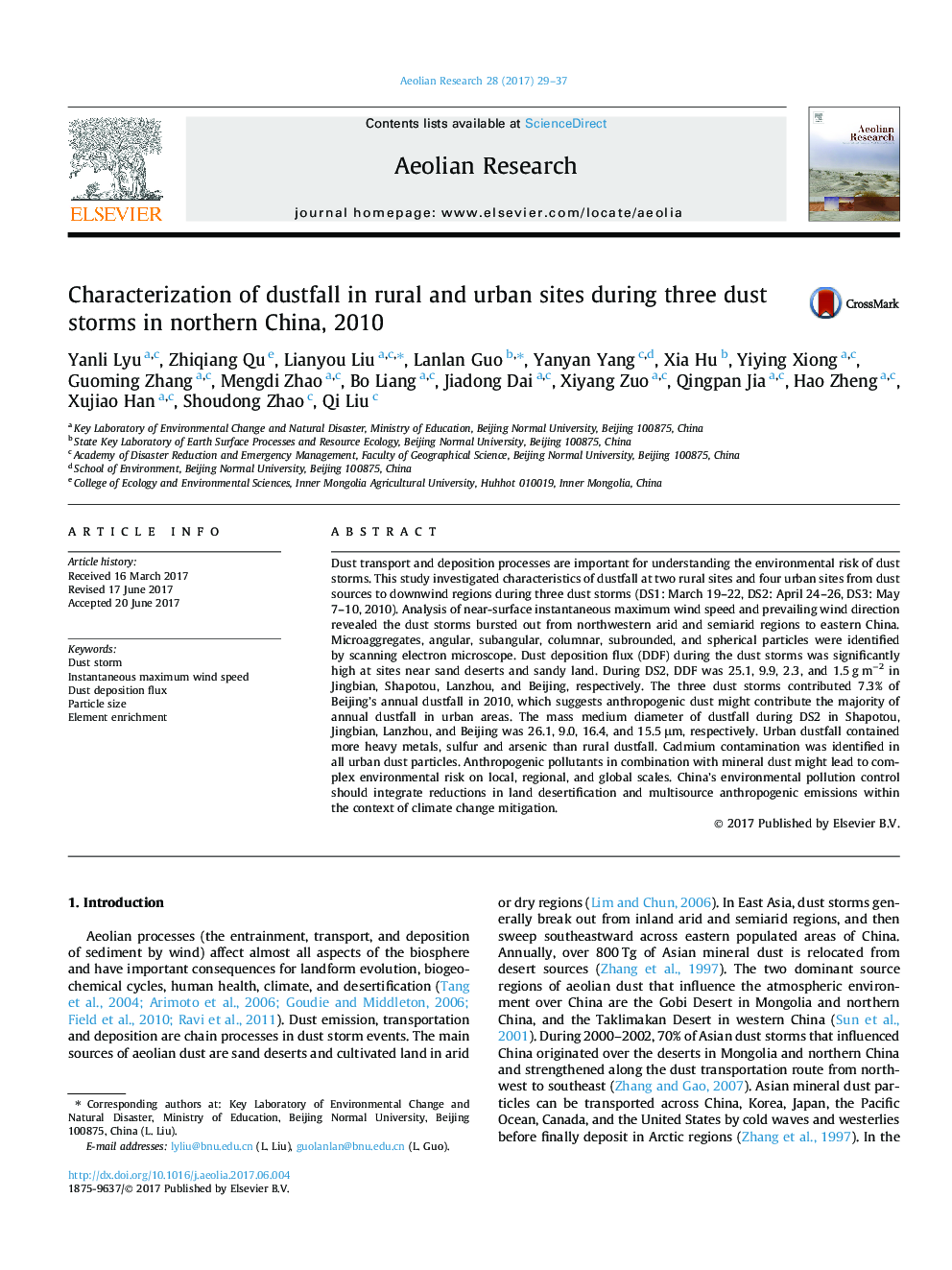| Article ID | Journal | Published Year | Pages | File Type |
|---|---|---|---|---|
| 5779065 | Aeolian Research | 2017 | 9 Pages |
Abstract
Dust transport and deposition processes are important for understanding the environmental risk of dust storms. This study investigated characteristics of dustfall at two rural sites and four urban sites from dust sources to downwind regions during three dust storms (DS1: March 19-22, DS2: April 24-26, DS3: May 7-10, 2010). Analysis of near-surface instantaneous maximum wind speed and prevailing wind direction revealed the dust storms bursted out from northwestern arid and semiarid regions to eastern China. Microaggregates, angular, subangular, columnar, subrounded, and spherical particles were identified by scanning electron microscope. Dust deposition flux (DDF) during the dust storms was significantly high at sites near sand deserts and sandy land. During DS2, DDF was 25.1, 9.9, 2.3, and 1.5 g mâ2 in Jingbian, Shapotou, Lanzhou, and Beijing, respectively. The three dust storms contributed 7.3% of Beijing's annual dustfall in 2010, which suggests anthropogenic dust might contribute the majority of annual dustfall in urban areas. The mass medium diameter of dustfall during DS2 in Shapotou, Jingbian, Lanzhou, and Beijing was 26.1, 9.0, 16.4, and 15.5 μm, respectively. Urban dustfall contained more heavy metals, sulfur and arsenic than rural dustfall. Cadmium contamination was identified in all urban dust particles. Anthropogenic pollutants in combination with mineral dust might lead to complex environmental risk on local, regional, and global scales. China's environmental pollution control should integrate reductions in land desertification and multisource anthropogenic emissions within the context of climate change mitigation.
Related Topics
Physical Sciences and Engineering
Earth and Planetary Sciences
Atmospheric Science
Authors
Yanli Lyu, Zhiqiang Qu, Lianyou Liu, Lanlan Guo, Yanyan Yang, Xia Hu, Yiying Xiong, Guoming Zhang, Mengdi Zhao, Bo Liang, Jiadong Dai, Xiyang Zuo, Qingpan Jia, Hao Zheng, Xujiao Han, Shoudong Zhao, Qi Liu,
